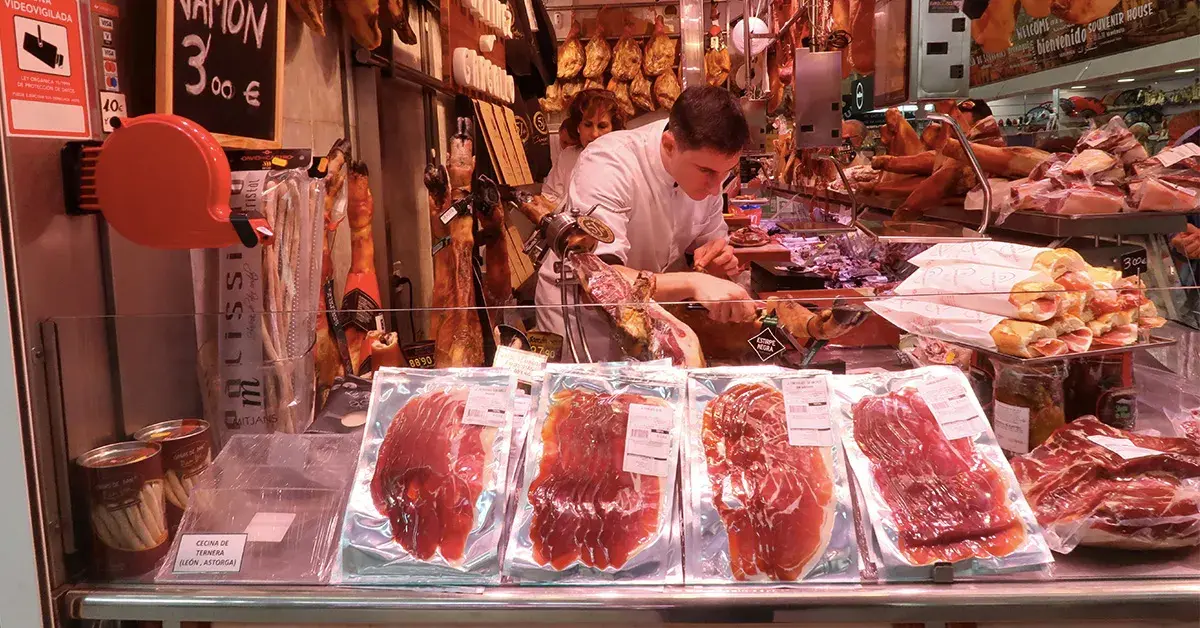What Makes Bagley Farms Meat Market Edwardsville IL Stand Out for Meat Lovers
What Makes Bagley Farms Meat Market Edwardsville IL Stand Out for Meat Lovers
Blog Article
Discover the Art of the Butcher's Cut in a Modern Meat Market
In the ever-evolving landscape of modern-day meat markets, the butcher's cut has actually transcended its standard roots, merging age-old craftsmanship with modern techniques. Today's butchers are not just processors of meat; they are educated craftsmens who emphasize sustainability and ethical sourcing. Their proficiency in selecting and preparing cuts customized to details cooking needs offers an unrivaled dining experience. Yet, what truly establishes the contemporary butcher apart is their ability to build a much deeper connection in between consumers and the origins of their meat. How do these masters equilibrium custom with innovation, and what effects does this have for the future of meat usage?
Development of Butchery Strategies
The advancement of butchery methods mirrors a rich tapestry of innovation and adjustment driven by improvements in technology, modifications in consumer demand, and a much deeper understanding of meat science. Historically, butchery was a craft passed down with generations, with techniques sharpened over centuries to take full advantage of return and flavor. The industrial revolution ushered in automation, changing standard techniques and allowing large-scale processing.
The mid-20th century saw butchery methods even more improved by scientific insights right into muscle biology and meat aging, improving both inflammation and preference. Developments like vacuum cleaner product packaging and refrigeration expanded product shelf-life, allowing butchers to diversify offerings and boost high quality control. This period also noted the increase of customized tools, such as band saws and meat slicers, which boosted accuracy and efficiency in meat handling.

Digital systems now aid in monitoring animal provenance and maximizing cuts to satisfy certain client choices. In addition, a revival in artisanal butchery has emerged, blending standard abilities with modern expertise to provide to consumers seeking moral and sustainable meat choices.
Comprehending Meat Cuts
Comprehending the ins and outs of meat cuts is necessary for both butchers and consumers looking for high quality and worth. Each cut comes from a different part of the animal, passing on unique flavors, textures, and cooking techniques - bagley farms meat market edwardsville il. Mastery of these differences not only improves culinary experiences yet additionally makes the most of the energy of each carcass. For butchers, specific cuts mirror skill and respect for the craft, making sure minimal waste and optimal yield.

Understanding muscle make-up is crucial; muscles utilized more often by the animal have a tendency to be tougher and are best matched for slow food preparation methods, while less-used muscles, like those located in the loin, are a lot more tender and perfect for grilling or roasting. Knowledge with these distinctions encourages customers to make enlightened options, improving their cooking ventures.
Selecting Top Quality Meat
Picking the appropriate meat entails more than simply choosing a visually enticing piece from the display. The art of picking quality meat requires a discerning eye and understanding of particular attributes that signify quality and excellence.
Secondly, think about the marbling, which describes the white streaks of fat within the muscle mass. Appropriate marbling is a crucial sign of inflammation and flavor, as it melts during food preparation, boosting the meat's juiciness. Bear in mind, higher marbling typically correlates with exceptional high quality cuts, such as USDA Prime.
Texture is an additional essential element; meat must find out here really feel strong to the touch, not slimy or excessively soft. Additionally, be mindful of the aroma. Fresh meat must have a clean, neutral scent, without any kind of sour or off-putting odors.
Combining Cuts With Food Preparation Approaches

Alternatively, harder cuts like brisket and chuck roast are rich in collagen, which breaks down right into gelatin when cooked gradually. These cuts are excellent for braising or sluggish roasting, see this website enabling the meat to soften with time and develop deep, complicated tastes. Cuts such as brief ribs and pork shoulder make out well with slow-cooking approaches, where prolonged cooking times transform their robust appearances into delicious meals.
Lamb shanks and oxtail, which call for prolonged food preparation to tenderize, are excellent prospects for stewing or slow simmering. These techniques coax out rich, hearty flavors while keeping moisture. By recognizing the one-of-a-kind features of each cut, cooks and home chefs alike can raise their cooking developments, guaranteeing each dish is both pleasing and memorable.
The Butcher's Role Today
Navigating the developing landscape of the contemporary meat market, the butcher's function today prolongs past plain preparation of cuts. Contemporary butchers are cooking craftsmens, teachers, and advocates for sustainable methods.
In enhancement to crafting specific cuts, butchers currently involve directly with customers, offering cooking advice and customizing selections to suit individual demands and choices. Their experience in meat aging, marbling, and taste profiles equips consumers to make enlightened choices, enhancing their cooking experiences. This individualized service exemplifies the butcher's advancing duty as a relied on consultant in the kitchen area.
In addition, butchers are pivotal in lessening waste, utilizing whole pets to create varied items such as sausages and stocks. This thorough method not just values the animal but also aligns with contemporary sustainability objectives. This way, Check This Out the modern butcher symbolizes both tradition and advancement, adapting to an ever-changing market while maintaining the artistry and integrity of their craft.
Final Thought
The contemporary butcher's craft delicately weaves typical methods with modern technologies, stressing sustainable practices and ethical sourcing. Mastery in comprehending varied meat cuts and high quality indicators encourages butchers to give enlightened suggestions, straightening details cuts with optimal cooking approaches. This competence not just raises cooking experiences however likewise enhances the link between customers and the origins of their food. By recognizing historic techniques while embracing modern needs, the butcher's function stays vital in today's advanced meat market (bagley farms meat market edwardsville il).
Report this page